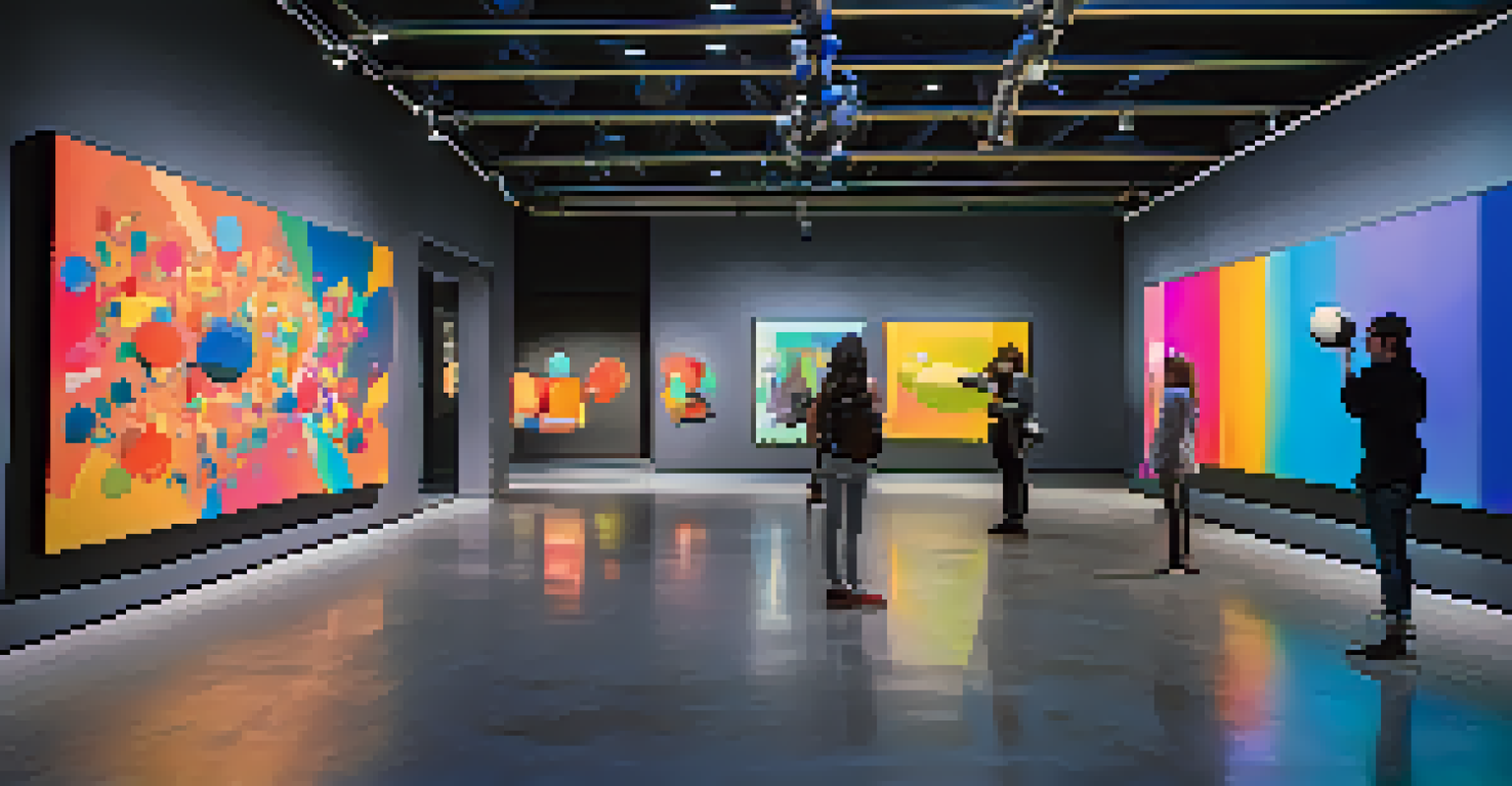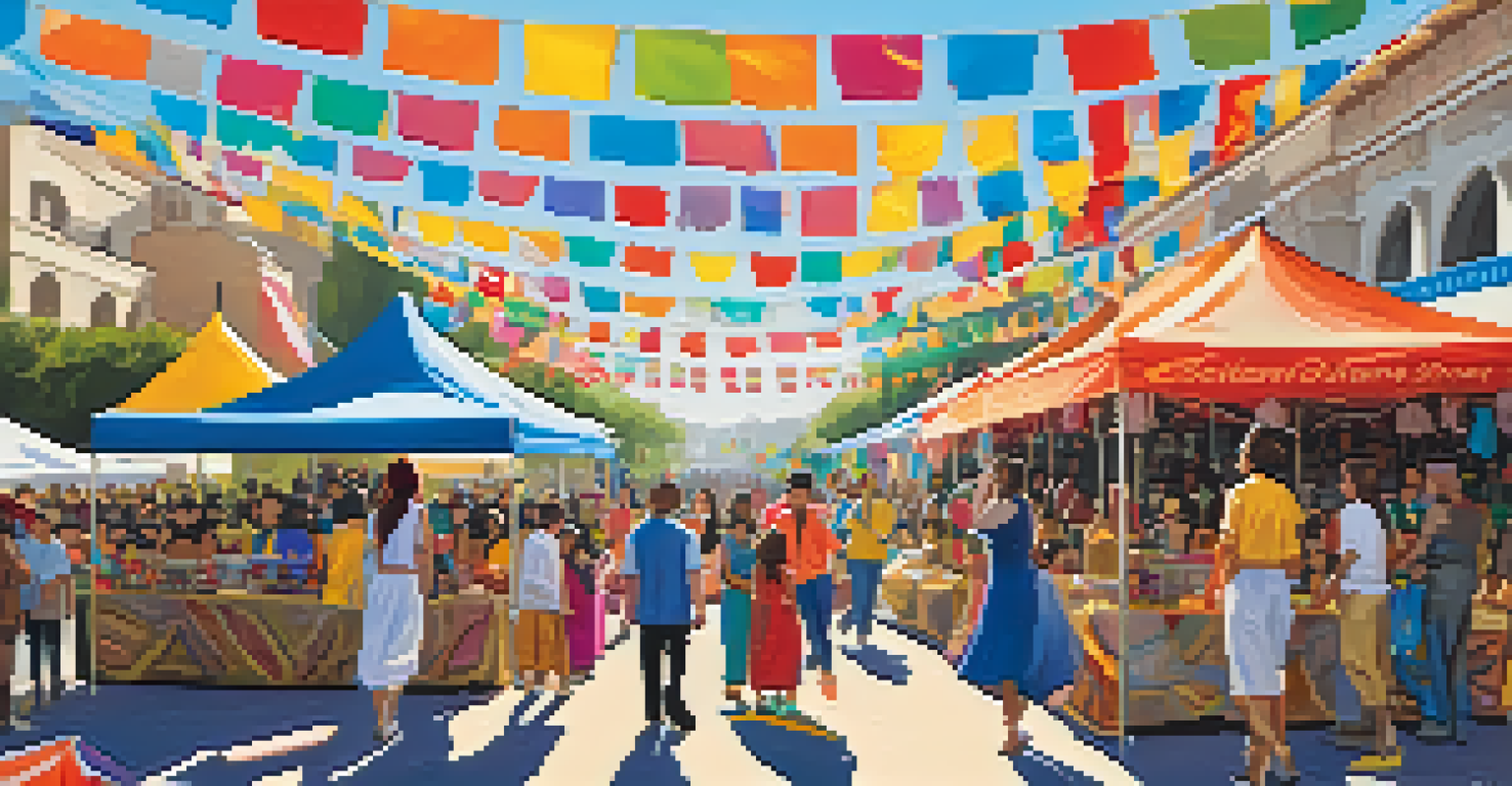The Future of Pasadena's Cultural Institutions: Trends and Changes

Embracing Technology in Cultural Experiences
As we move deeper into the digital age, Pasadena's cultural institutions are increasingly utilizing technology to enhance visitor experiences. From virtual tours of museums to interactive art installations, these innovations make culture more accessible than ever. Imagine being able to explore the Norton Simon Museum from the comfort of your home, with guided tours available at your fingertips.
Technology is best when it brings people together.
Moreover, augmented reality (AR) and virtual reality (VR) applications are beginning to transform how audiences engage with art and history. Picture a visitor pointing their phone at a painting, only to see a short documentary about its creator pop up on their screen. This blend of education and entertainment creates a richer, more immersive experience that appeals to younger generations.
However, while technology can enhance cultural appreciation, it’s crucial for institutions to balance digital advancements with the authenticity of in-person experiences. The goal is not to replace traditional visits but to complement them, ensuring that Pasadena remains a hub for both innovation and cultural heritage.
Sustainability and Eco-Conscious Practices
With a growing awareness of climate change, Pasadena's cultural institutions are stepping up to adopt sustainable practices. Galleries and theaters are exploring eco-friendly materials for exhibitions and performances, ensuring that their environmental footprint is minimized. By prioritizing sustainability, these institutions not only contribute to a healthier planet but also inspire their audiences to embrace green practices.

For instance, the Pasadena Playhouse is beginning to incorporate energy-efficient lighting and sustainable set designs in their productions. This not only reduces costs but also serves as a powerful statement about the importance of environmental responsibility in the arts. Audiences appreciate knowing that their favorite shows are being produced with the planet in mind.
Tech Enhances Cultural Experiences
Pasadena's cultural institutions are leveraging technology like virtual tours and augmented reality to make art and history more accessible and engaging.
Furthermore, partnerships with local environmental organizations can help amplify these efforts. By collaborating on community projects or educational programs, cultural institutions can play a pivotal role in fostering a culture of sustainability across Pasadena.
Diversity and Inclusion in Programming
As society becomes more diverse, Pasadena's cultural institutions are making strides toward inclusivity in their programming. This means showcasing artists from various backgrounds and ensuring that different voices and perspectives are represented. By doing so, these institutions not only enrich their offerings but also connect more deeply with the community.
Diversity is not about how we differ. Diversity is about embracing one another's uniqueness.
For example, events like the Pasadena Latino Heritage Parade highlight the rich cultural tapestry of the city, allowing residents to celebrate their heritage together. Institutions are also reaching out to underrepresented groups to ensure that their stories are told through exhibitions and performances. This shift not only broadens the audience but creates a more vibrant cultural landscape.
Additionally, fostering an inclusive environment begins with the staff and leadership of these institutions. By prioritizing diversity in hiring practices, cultural institutions can better reflect the communities they serve and create programming that resonates with a wider audience.
Community Engagement and Collaboration
The future of Pasadena's cultural institutions is increasingly focused on community engagement and collaboration. Many organizations are recognizing that partnerships with local community groups can lead to more impactful programming. This approach creates a sense of ownership and pride among residents, encouraging them to participate actively in cultural events.
For instance, collaborative art projects involving local schools or neighborhoods can foster creativity and bring people together. Imagine a mural that tells the story of Pasadena, created by artists from the community, which not only beautifies the city but also strengthens social bonds. These initiatives show that cultural institutions are not just places to visit but integral parts of the community.
Sustainability in Cultural Practices
Cultural institutions in Pasadena are adopting eco-conscious practices, such as energy-efficient designs, to promote environmental responsibility in the arts.
Moreover, feedback from community members can help shape future programming. By listening to the needs and interests of local residents, cultural institutions can curate exhibitions and events that truly resonate, making the arts more relevant and accessible.
The Role of Arts Education in Cultural Growth
Arts education plays a crucial role in the future of Pasadena's cultural institutions. By fostering creativity in schools and after-school programs, these institutions can cultivate the next generation of artists and cultural leaders. Programs that focus on art, music, and theater not only enrich students' lives but also strengthen the community's cultural fabric.
For example, partnerships with local schools can provide students with hands-on experiences in museums and theaters, allowing them to explore their creative potential. Imagine a student whose school collaborates with the Pasadena Museum of California Art for a project that culminates in an exhibition of their work. Such experiences can ignite lifelong passions for the arts.
Additionally, arts education can enhance critical thinking and problem-solving skills, which are valuable traits in any field. By emphasizing the importance of creativity in education, Pasadena's cultural institutions can help shape well-rounded individuals who contribute positively to society.
Cultural Tourism and Economic Impact
Cultural tourism is a significant driver of Pasadena's economy, and its importance is expected to grow in the coming years. As travelers increasingly seek authentic local experiences, the city’s cultural institutions are well-positioned to attract visitors. Events like art walks, music festivals, and cultural fairs not only showcase local talent but also draw tourists eager to explore Pasadena's rich cultural scene.
Moreover, the economic impact of cultural tourism extends beyond just ticket sales. Local businesses benefit from increased foot traffic, as visitors stop by restaurants, shops, and hotels while enjoying cultural events. This interconnectedness creates a thriving ecosystem that supports both the arts and local economies.
Diversity Drives Cultural Programming
Efforts to include diverse voices in programming are enriching Pasadena's cultural landscape and fostering a deeper connection with the community.
By promoting unique cultural experiences, Pasadena can attract a diverse range of visitors. This not only boosts revenue for institutions but also fosters a sense of pride among residents, who can showcase their city’s vibrant culture to the world.
Adapting to Changing Audience Preferences
As audience preferences evolve, Pasadena's cultural institutions are adapting to meet the changing needs of their visitors. Today's audiences often seek experiential events that go beyond passive observation, leading institutions to create interactive and participatory programs. This shift encourages deeper engagement and fosters connections between the audience and the art.
For example, workshops that allow participants to create their own art or performances that invite audience interaction can transform the typical cultural experience. Imagine attending a theater performance where the audience gets to choose the direction of the story—this approach not only entertains but also empowers attendees.

Additionally, institutions are utilizing data and feedback to better understand their audiences. By analyzing attendance patterns and preferences, they can tailor their programming to create more compelling experiences that resonate with diverse demographics, ensuring that Pasadena's cultural scene remains relevant and engaging.